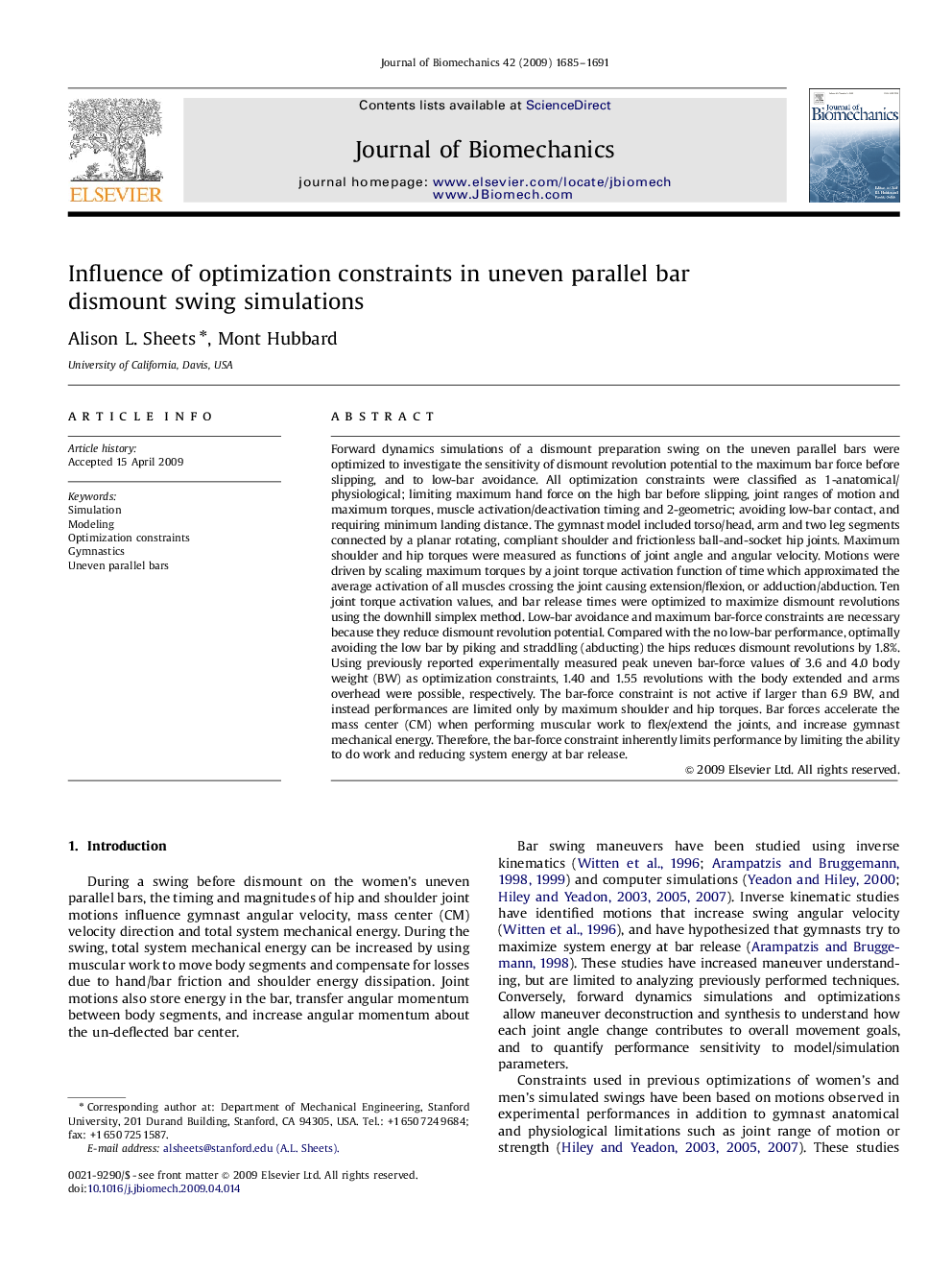| کد مقاله | کد نشریه | سال انتشار | مقاله انگلیسی | نسخه تمام متن |
|---|---|---|---|---|
| 874436 | 910337 | 2009 | 7 صفحه PDF | دانلود رایگان |

Forward dynamics simulations of a dismount preparation swing on the uneven parallel bars were optimized to investigate the sensitivity of dismount revolution potential to the maximum bar force before slipping, and to low-bar avoidance. All optimization constraints were classified as 1-anatomical/physiological; limiting maximum hand force on the high bar before slipping, joint ranges of motion and maximum torques, muscle activation/deactivation timing and 2-geometric; avoiding low-bar contact, and requiring minimum landing distance. The gymnast model included torso/head, arm and two leg segments connected by a planar rotating, compliant shoulder and frictionless ball-and-socket hip joints. Maximum shoulder and hip torques were measured as functions of joint angle and angular velocity. Motions were driven by scaling maximum torques by a joint torque activation function of time which approximated the average activation of all muscles crossing the joint causing extension/flexion, or adduction/abduction. Ten joint torque activation values, and bar release times were optimized to maximize dismount revolutions using the downhill simplex method. Low-bar avoidance and maximum bar-force constraints are necessary because they reduce dismount revolution potential. Compared with the no low-bar performance, optimally avoiding the low bar by piking and straddling (abducting) the hips reduces dismount revolutions by 1.8%. Using previously reported experimentally measured peak uneven bar-force values of 3.6 and 4.0 body weight (BW) as optimization constraints, 1.40 and 1.55 revolutions with the body extended and arms overhead were possible, respectively. The bar-force constraint is not active if larger than 6.9 BW, and instead performances are limited only by maximum shoulder and hip torques. Bar forces accelerate the mass center (CM) when performing muscular work to flex/extend the joints, and increase gymnast mechanical energy. Therefore, the bar-force constraint inherently limits performance by limiting the ability to do work and reducing system energy at bar release.
Journal: Journal of Biomechanics - Volume 42, Issue 11, 7 August 2009, Pages 1685–1691